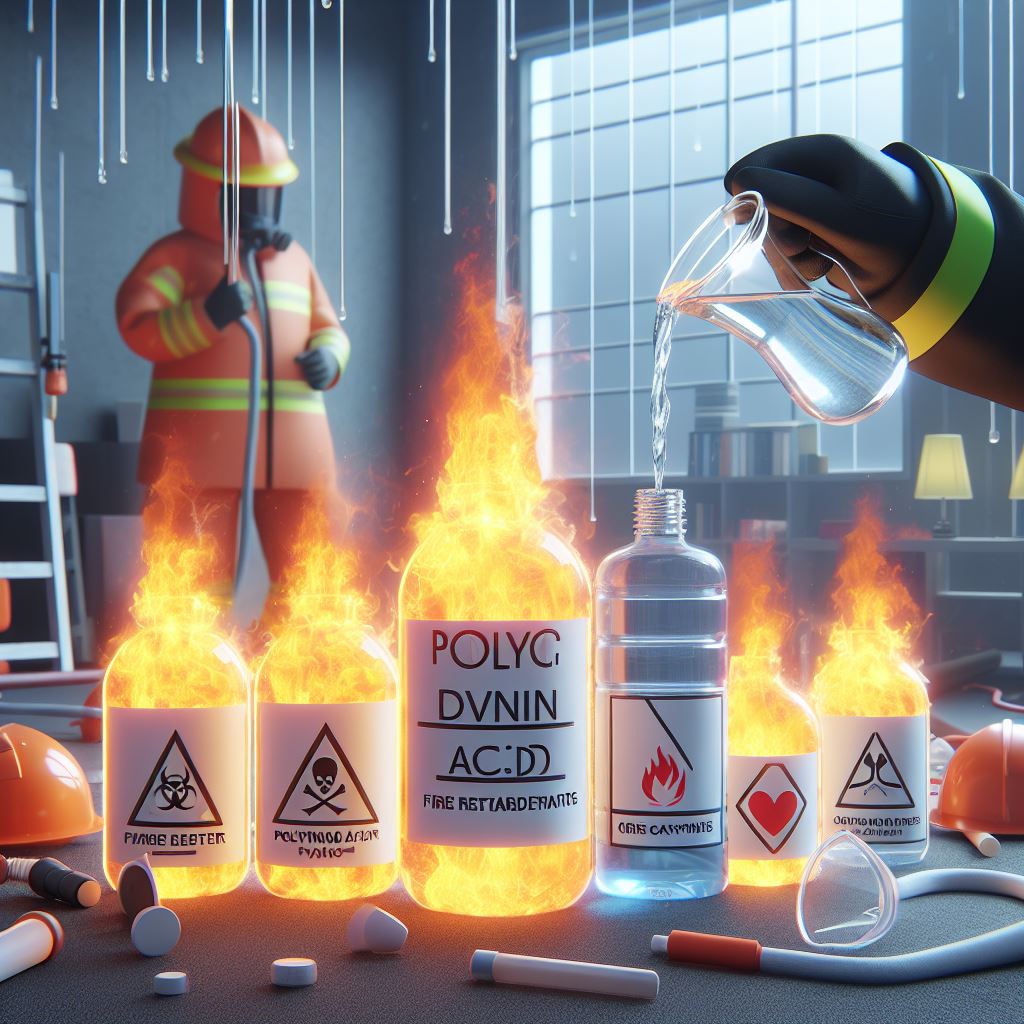Polyvinyl Acid: Fire safety is paramount in any home. A crucial line of defense against the devastating effects of a fire is the use of fire retardants. These chemicals act by slowing the spread of flames, buying precious time for escape, and allowing firefighters to contain the blaze. One such fire retardant gaining traction is polyvinyl acid (PVA). This blog delves into the world of PVA and explores its potential role in keeping your home safe.
Polyvinyl Acid: Beyond the Glue Aisle
While many might associate PVA with school glue, its applications extend far beyond arts and crafts. PVA is a versatile polymer with unique chemical properties. One of its key characteristics is its ability to interfere with the combustion process. When incorporated into building materials, PVA can disrupt the chemical reactions that fuel a fire, delaying its growth and spread.
How Does PVA Work as a Fire Retardant?
Fire thrives on a combination of heat, fuel, and oxygen. PVA disrupts this delicate balance in several ways. Firstly, it can act as a charring agent. When exposed to high temperatures, PVA decomposes, forming a char layer on the surface of the material. This char acts as a barrier, preventing access to oxygen to the underlying material and slowing down the burning process. Additionally, PVA can release non-combustible gases upon decomposition, further diluting the available oxygen and hindering flame propagation.

PVA Applications in Homes: Beyond the Headlines
While research on incorporating PVA directly into building materials like drywall is ongoing, its fire-retardant properties are already being utilized in various household products. Here are some examples:
- Textiles: PVA can be applied to fabrics like curtains or furniture upholstery, making them more resistant to ignition and slowing down the spread of flames.
- Electrical Cables: PVA coatings on electrical wires can help prevent fires caused by overheating or electrical faults.
- Paints and Coatings: PVA-based paints and coatings can offer an extra layer of fire protection for walls, ceilings, and other surfaces.
The Future of PVA Fire Retardants: Polyvinyl Acid
The use of PVA in construction materials holds immense promise. Researchers are actively exploring ways to incorporate PVA into building components like drywall and insulation. These advancements could lead to the development of safer and more fire-resistant homes.
Safety First: Important Considerations
While PVA shows promise, it’s crucial to remember that no single material is entirely fireproof. A layered approach to fire safety is essential. Here are some key points to remember:
- Always follow the manufacturer’s instructions when using PVA-containing products like treated fabrics or paints.
- Maintain a working fire alarm system and practice fire escape plans with your family.
- Invest in fire extinguishers and learn how to use them properly.
Conclusion: Polyvinyl Acid – A Promising Ally in Fire Safety
Polyvinyl acid offers exciting possibilities for enhancing fire safety in homes. As research progresses and applications evolve, PVA could play a significant role in creating safer living environments. However, remember, fire safety is a collective effort. By combining PVA-based products with other fire prevention measures, you can create a stronger line of defense against the dangers of fire in your home.






